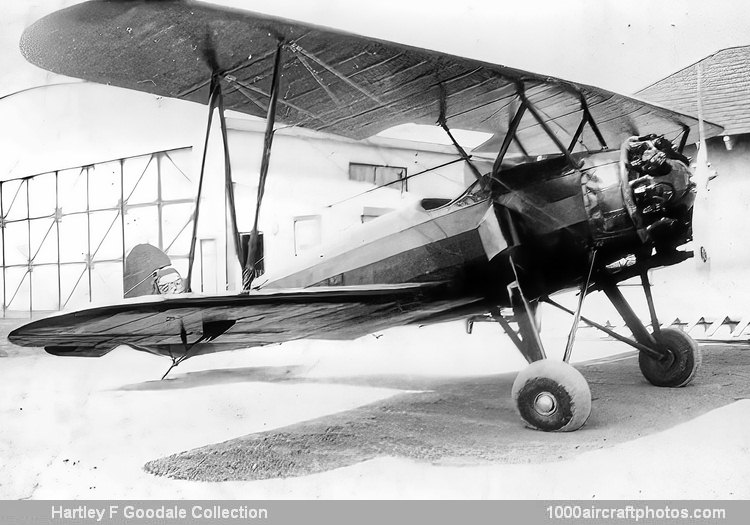11/15/2022. Remarks by Johan Visschedijk: "In 1929, Hayes Wheels & Forgings Ltd. of Chatham, Ontario, and its subsidiary, O. & W. McVean of Dresden, Ontario, makers of the wooden spokes for the wheels, were affected by the changes in standard automobile wheel design. Pressed steel wheels were replacing McVean's wooden spokes and the company was running short of work.
Norman Andrew Thompson, Chief Engineer of Hayes, a RFC and RAF pilot during WW I, bought a Lincoln Page LP-3 biplane in 1928 and began flying again. William Kistler, General Manager of Hayes, became interested and bought an Arrow Sport A2-60 biplane in 1929. Their flying was done from Thompson's private field near Chatham.
The Hayes company saw a future in manufacturing aircraft, and as contemporary types were constructed largely of wood, it was thought that work would be provided for McVean. So Hayes decided to underwrite the cost of a prototype trainer built by McVean which they intended to offer to the RCAF, private owners and flying-clubs.
Thompson and Kistler had been impressed by the Arrow A2-60 Sport but found its small size somewhat restrictive. They decided, therefore, that their first design would be simply a scaled-up and more powerful version. Its construction followed contemporary practice, with welded steel-tube fuselage and empennage and the wings of wood. All components were fabric covered. The power plant was an 110 hp Warner Super Scarab radial engine.
The aircraft, named Valkyr V-2 by Kistler, was first flown on 4 May, 1930, by Thompson, and three flights were made that day, with minor adjustments made between them. The aircraft showed excellent characteristics and proved remarkably easy to fly. The aircraft was registered CF-AKP as the McVean Valkyr V-2 on May 14, 1930.
The Valkyr V-2 was announced in the June issue of Canadian Air Review, however, it was never put into production. The RCAF tried it at Camp Borden and while some of its features were appreciated, the side-by-side seating was not liked and cockpit access, particularly when a parachute was worn, was criticized. The aircraft was also 'over-engineered' and heavier than it should have been because Thompson had produced a conservative design rather than risk a failure. Ernest H. Taylor, who did most of the flying in it because of his light weight, recalled that he would usually leave out the last 6 gal (23 l) of its generous 39.6 gal (150 l) capacity to enhance performance.
During the winter of 1930-31 an enclosure was installed over the open cockpit and the speed improved slightly. One interesting feature of the Valkyr V-2 was that, like the Arrow A2-60 Sport, it would not spin, although it spun normally after being fitted with a Townend ring cowling. The aircraft was never licensed commercially and flew as a private aircraft throughout its career although Taylor, and possibly others, barnstormed with it in southern Ontario. The Valkyr V-2 was sold in 1933 to a local automobile mechanic, Philip Alexander, however, its pilot was Taylor. It was grounded at the start of WW II and was destroyed in a hangar fire at Chatham in 1940 or 1946, depending on the source."
Span, upper: 29 ft 8 in (9.04 m)
Span, lower: 28 ft 8 in (8.74 m)
Length: 23 ft 8 in (7.21 m)
Height: 9 ft 3 in (2.82 m)
Wing area: 231.5 sq ft (21.51 sq.m)
Empty weight: 1,200 lb (544.8 kg)
Loaded weight: 1,850 lb (840 kg)
Max speed: 95 mph (136.8 kmh)
Cruise speed: cruising speed 60mph (96.5 kmh)
